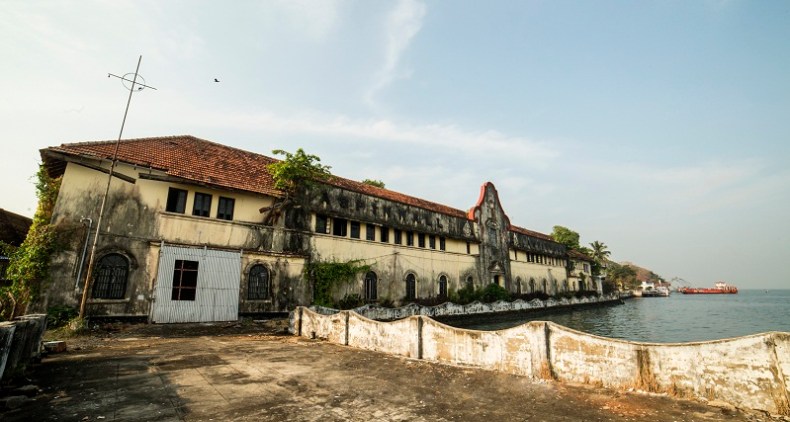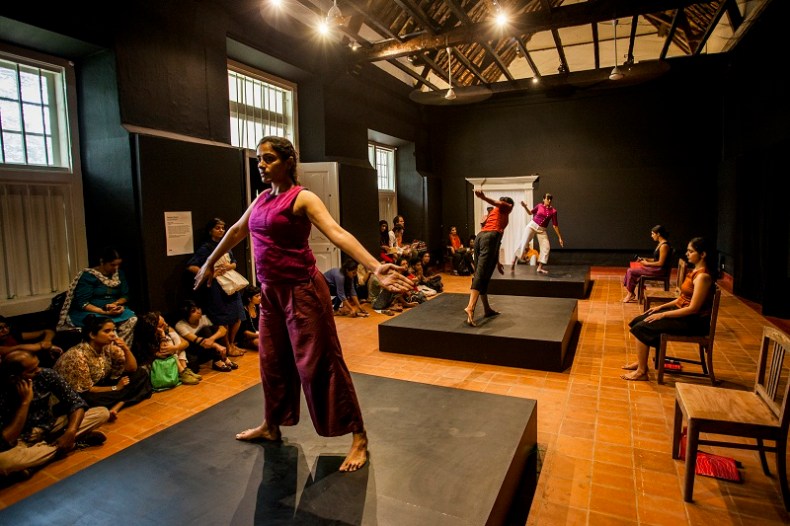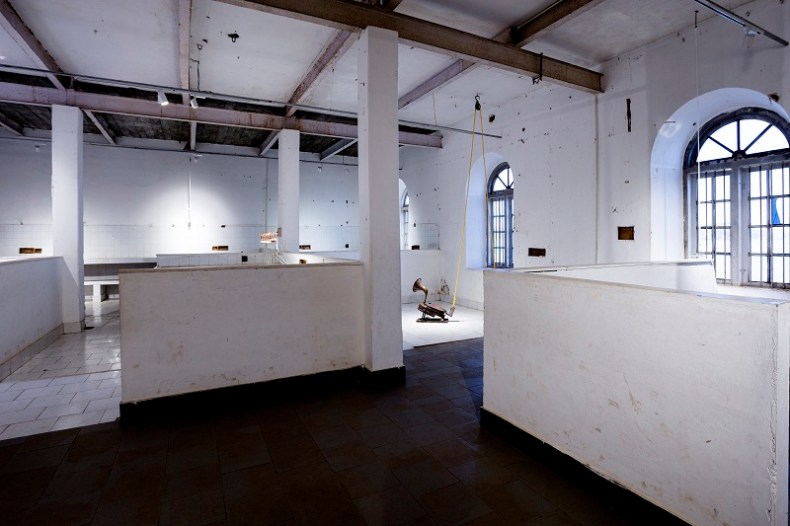Kochi is full of contradictions. It is at once fast, even though in it you move slowly, and its history dashes irrevocably against its new present. I write this from the courtyard of a homestay set in a Portuguese villa from the 16th century, a villa that is apparently the exact site of Vasco da Gama’s death. ‘I cannot declare this to the government,’ the proprietor tells me, ‘or they will seize it, at a pittance, you see.’ I am not quite sure how to ask if he can verify this history, or whether to mention that three other homestays make the same claim. Neither can I ask, for the duration of my stay there, for him to remove the painting of da Gama from above my bed, smiling as he plucks a plump orange from an overhanging tree.
My landlord, incidentally, is a member of a small, radically Marxist political party; hardly rare in the capital of a part-time Communist state (Kerala’s Communist party struggles to maintain a hold past one election cycle, steadfastly reclaiming seats at the next). But Communism is not in its usual iteration here in Kerala: Kochi Communists are often well-behaved Catholics, pay or receive dowries and, in many subtle ways, uphold the caste system. Like I said, contradictions.

Aspinwall House. Courtesy of Kochi-Muziris Biennale
The Kochi-Muziris Biennale, inaugurated in 2012, is now in its third edition. It has certainly brought with it a new kind of traffic; in fact, a new familiarity with the language of the art world. My drive from the ferry to the home of da Gama’s death is in an auto-rickshaw carefully inlaid with laminated photographs of the driver’s own: self-portraits, landscapes, portraits of passengers. ‘I am a curator too,’ he nods gleefully as we ride down the street, ‘this is my biennale.’
This Biennale spills outwards, onto the walls of the city as volunteers, in the thick of the night, paint passages from Argentinian writer Sergio Chejfec’s novel Baroni: A Journey; and in more subtle ways, as timeworn and disused spice warehouses gather themselves to suit venue needs. ‘My first impulse was to come up with a theme, but to realise quickly that it needed to be outside of that,’ says curator Sudarshan Shetty over a fried fish we share for lunch.

Performance by Padminu Chettur. Courtesy of the Kochi-Muziris Biennale
Shetty hopes for the Biennale to, above all, continuously generate conversation. An attention to process and methodology is at once noticeable with the display of works that easily betray their own labour or which make labour explicitly visible: such as the still unfinished work of P.K Sadanandan, a mural painter and cartoonist, who will steadily add to his mural everyday. This edition has also included performance works for the first time, most notably the work of contemporary dancer Padmini Chettur and her meditative reflection on the language of Bharatanatyam. Shetty is insistent for us ‘not to see all these practices as postulations of a single narrative,’ and it is certainly a soft curation: narratives here are multiple, and do not call for an immediate response.
The most ambitious Biennale programme is undoubtedly the Students’ Biennale, which displays over 200 artworks from government schools across several states. Students have produced and presented work from some of the most politically volatile states in the country, including Kashmir and Odisha, and they have travelled upwards of three or four days by train to reach Kochi in time to install, and sometimes perform. One of the most striking works on display is a shawl embroidered with metal pellet gun casings, as used by the Indian Army against civilians in Kashmir. The artist, Annie Pervez, drapes it gently across visitors’ shoulders, and you feel its weight straight away.
A visit to Kerala can quite easily turn into a colonial fantasy: old streets full at every corner with spice markets and silk merchants, paper-thin cotton and silk of the brightest weave. The further above sea level you go, the more tea there is to find – nutmeg too, cinnamon, coffee. Often it is hard to ascertain what operates as colonial fetish, and what simply exists: what is being performed and what instead is ritual, or just the way of life in a place where different versions of history collide. The Biennale thus provides an interesting respite, but it is not without contradiction itself, for instance in the capricious attitude that the strong local labour union has adopted to the event.

Yuko Mohri’s exhibition at the Kochi-Muziris Biennale, installation view. Courtesy of the Kochi-Muziris Biennale
It is not unusual to enter a venue that still retains the smell of a spice stored there for decades previous: dried ginger, black pepper, cardamom. Or from the large bay windows at Aspinwall House to spy the sea habits of local fisherman, and precisely at 6pm each evening, those of dolphins too. As Yuko Mohri’s kinetic sculptures jerk recklessly against invisible forces made delightfully visible by the artist, one has access to stunning views of the sea behind and of the fishing boats curving against the tide.
The Kochi-Muziris Biennale is held across 12 venues in Kerala until 29 March.
Unlimited access from just $16 every 3 months
Subscribe to get unlimited and exclusive access to the top art stories, interviews and exhibition reviews.














![Masterpiece [Re]discovery 2022. Photo: Ben Fisher Photography, courtesy of Masterpiece London](http://zephr.apollo-magazine.com/wp-content/uploads/2022/07/MPL2022_4263.jpg)
Cultural leaders must resist being brought into line